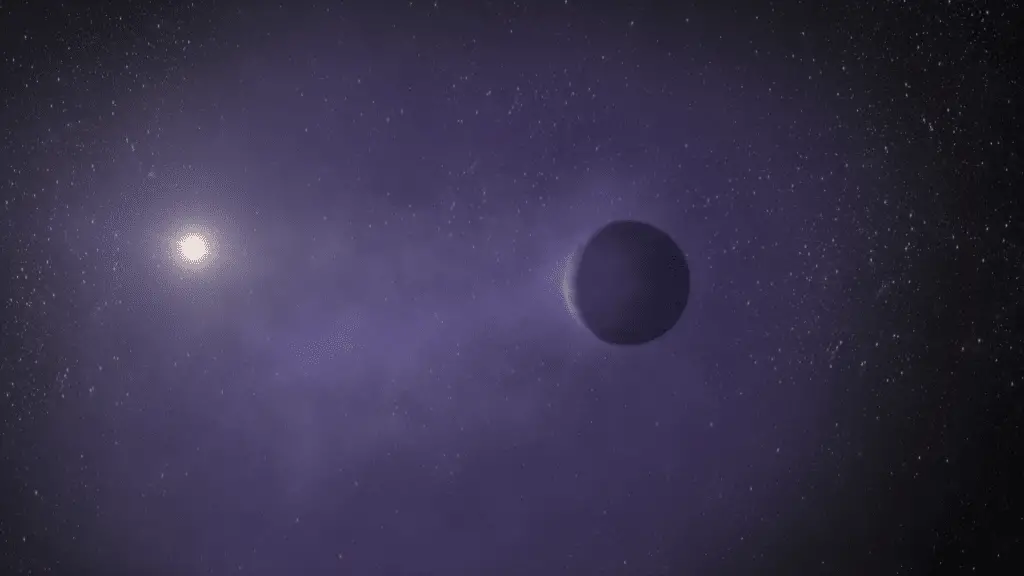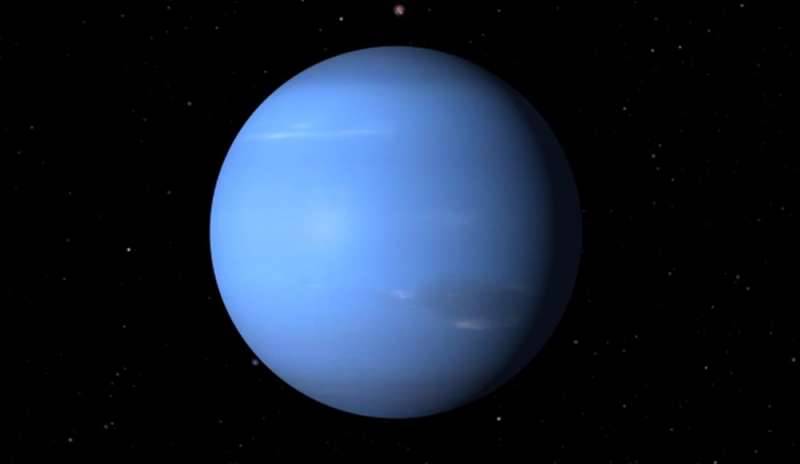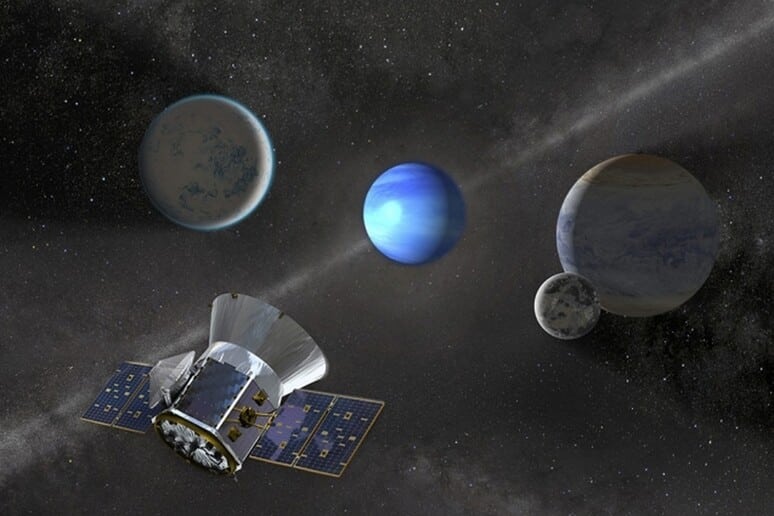Researchers discovered mini-Neptunes around four red dwarfs using observations from a global network of ground-based telescopes and the TESS space telescope. They are close to their parent stars, and all three are likely to be in eccentric orbits.
The research was published on The Astronomical Journal.
What do mini-Neptunes look like?
Planets between the size of Earth and Uranus/Neptune, known as mini-Neptunes, are not found in our solar system. However, mini-Neptunes are relatively common outside the solar system and represent promising targets for atmospheric characterization by the James Webb Space Telescope. What do mini-Neptunes look like?
This study discovered four transiting short-period mini-Neptunes (TOI-782 b, TOI-1448 b, TOI-2120 b and TOI-2406 b) orbiting red dwarfs through follow-up observations with ground-based telescopes with MuSCAT (a series of simultaneous multicolor cameras for studying the atmospheres of transiting exoplanets). These mini-Neptunes have a radius about 2-3 times that of Earth and orbital periods of less than eight days.
Furthermore, these measurements of the radial velocity of their parent stars, obtained with the IRD (InfraRed Doppler) on the Subaru telescope, indicate that the upper limit on the masses of these four planets it is less than 20 times the mass of the Earth. The relationship between the measured radii and upper mass limits of these mini-Neptunes suggests that they are not rocky planets like Earth. Their interiors probably contain volatiles such as frozen materials such as H 2 O and atmospheres.

The team also found that at least three (TOI-782 b, TOI-2120 b, TOI-2406 b) of these four mini-Neptunes are likely in eccentric orbits. In general, a short-period planet’s orbit around a red dwarf should be circular due to tidal dissipation. However, three short-period mini-Neptunes around the red dwarfs have maintained non-zero eccentricities for billions of years.
One possible interpretation of this is that their interiors are not susceptible to tidal effects. The mass-radius relationship of these four mini-Neptunes suggests that they are not rocky planets. Therefore, the interiors of these mysterious mini-Neptunes may be similar to those of Neptune.
Short-period mini-Neptunes are promising targets for atmospheric observations with the James Webb Space Telescope. Further detailed follow-up observations are expected to improve our understanding of the internal compositions and atmospheres of short-period mini-Neptunes.
Could mini-Neptunes be irradiated ocean planets?
Many exoplanets known today are “super-Earths,” with a radius 1.3 times that of Earth, and “mini-Neptunes,” with an Earth radius of 2.4. Mini-Neptunes, which are less dense, were long thought to be gaseous planets, made up of hydrogen and helium.
Scientists at the Marseille Astrophysiology Laboratory (CNRS/Aix-Marseille Université/Cnes) have examined a new possibility, namely that the low density of mini-Neptune could be explained simply by the presence of a thick layer of water that they experience an intense greenhouse effect caused by the irradiation of their host star.

These results, recently published in the Astrophysical Journal Letters, show that mini-Neptunes could be super-Earths with a rocky core surrounded by water in a supercritical state, suggesting that these two types of exoplanets could form in the same way. Another paper recently published in Astronomy & Astrophysics, involving scientists mainly from the CNRS and the University of Bordeaux, focused on the effect of stellar irradiation on the radius of Earth-sized planets containing water.
Their work shows that the size of such planets’ atmospheres increases significantly when subjected to a strong greenhouse effect, in line with the mini-Neptune study.
Future observations should allow us to verify these new hypotheses put forward by French scientists, who are making important contributions to our knowledge of exoplanets.
The effect of starlight on the atmospheres of mini-Neptunes
Exoplanet investigations have discovered the first planets with sizes between 2 and 3.5 Earth radii, slightly smaller than the size of the planet Neptune in our solar system.
These planets, nicknamed “mini-Neptunes,” have so far been spotted around five low-mass stars, but because low-mass stars are the most common stars in the universe, and because planets are also expected to be abundant around them , astronomers expect to find many more in the near future.
Since low-mass stars in general are redder than the Sun and have lower surface temperatures, most of their flux is emitted in the optical and near-IR range. Some of them, however, have active atmospheres that emit copious ultraviolet radiation.
Ultraviolet radiation from a star can have a significant effect on the atmosphere of any orbiting planet by dissociating molecules and thus altering atmospheric chemistry. Astronomers have calculated these effects for some types of exoplanets, but the case of mini-Neptunes has never been explored.

Since it now appears that they are likely abundant, CfA astronomers Lisa Kaltenegger and Sarah Rugheimer and two colleagues calculated what happens when they are exposed to stellar ultraviolet and compared their results with the atmosphere in one of the observed objects, GJ436b, a relatively cold exoplanet with a surface temperature of around 640 Kelvin.
The most abundant molecule in GJ436b’s atmosphere is believed to be molecular hydrogen, followed by water; the most abundant carbon-bearing molecule is methane, followed by carbon dioxide. (By comparison, in more massive exoplanets the primary carbon molecule is carbon monoxide.)
Ultraviolet light from the star dissociates water, and since water is a primary absorber of ultraviolet light, its destruction allows UV to penetrate deeper into the star’s lower layers. atmosphere, producing a significantly different chemical structure, also affecting the abundance of atomic oxygen.
Scientists find that the upper atmosphere of mini-Neptunes can be significantly altered by the star’s ultraviolet, and future analyzes cannot fail to take this into account, but further observations of mini-Neptunes are needed to refine the conclusions.
#mysterious #miniNeptunes #discovered